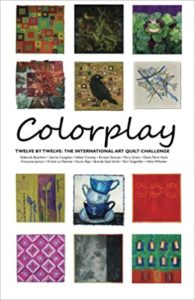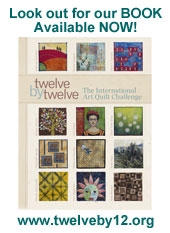As we have discussed this theme (well, you all mostly discussed...I just panicked quietly in the background) and then revealed our results, I was struck at how frequently people have talked about being bad at math, or phobic about it, or not good with numbers, and the like. It has been a very pervasive topic during the period for this theme.
Maybe that's partly natural, because we're obviously all so visual and put such a priority on creativity in our lives. But this process, and everyone's comments along the way, have made me realize how math is so much more than numbers -- AND how self-defeating it is to go around telling ourselves and each other that we don't do math well.
In fact, as this challenge has illustrated, we all do it very well. We're constantly calculating yardage and size of pieces of fabric and amounts of dye. Our concepts of balance and design are heavily influenced by mathematical underpinnings, as the whole fractal thing and Deborah's tree reminds us. We use geometric shapes all of the time. We can understand how it influences our politics and they way we view social issues.
Maybe I'm so mindful about this because of having a daughter who is a whiz at math but who goes around saying that she doesn't like it. I think she has started saying that because it's what the girls in her class say, to be honest. When I press her about it, she admits that she DOES enjoy it and finds it fun, and she's proud of doing it well. But it's not "cool" to say so ... better to act blase and even somewhat inept.
We all have young women in our lives -- daughters and grandaughters and friends and nieces -- and I'd like to think that we can start to convey more positive ideas about math. Maybe even simple things like "I wasn't great at algebra but I loved geometry and working with those shapes" or even talking about how the simplest and coolest things have some connection to math.
I think a lot about a friend of mine who has it in her head that she cannot "make things." She walks through craft shows and galleries and says things like "I could never do that." Not surprisingly, her 13 year old daughter has picked up this same attitude, and doesn't even try to do artsy things. When they visit, I always make sure that we do some group art project, and they're just fine! But they've convinced themselves that they can't do it, and I see so clearly how the mom's comments influence the daughter. Seeing that makes me *try* to think about how I talk about math and science with Caroline. I want her to feel strong and capable.
Without being preachy, I hope that we all can remember that the view we portray to the girls in our lives who look up to us will, in fact, influence them. So enough with the "I can't do math" talk! Now you can say, "there are so many interesting aspects of math!" Just check out our quilts!!
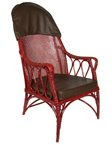 As an occasional passenger on longhaul flights, I am relieved that airline seats have come a long way in the last eighty years.
As an occasional passenger on longhaul flights, I am relieved that airline seats have come a long way in the last eighty years.

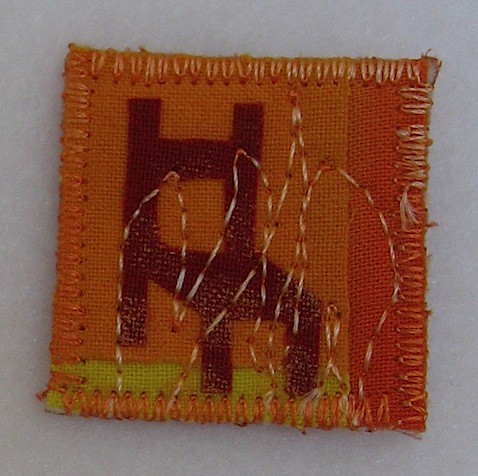































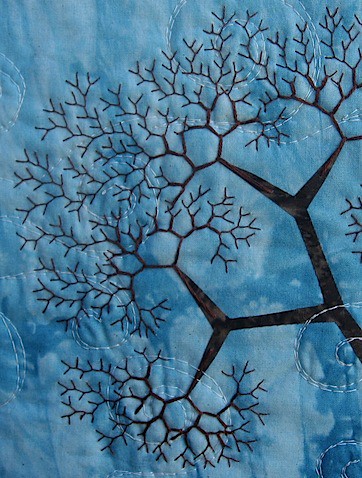
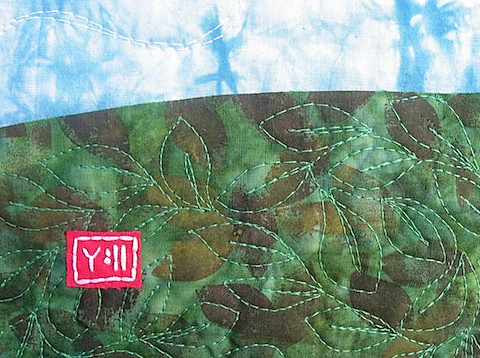







 My first thought when the theme was announced was of the current economic climate - see
My first thought when the theme was announced was of the current economic climate - see  This quilt is made from a base layer of fabric fused to Pelmet vilene and edged using a tutorial I found on Terry's site. Then there is a layer of painted Lutrador cut into two sets of horizontal strips and hinged at either side embellished with little parcels of plain Lutrador tied with Perle thread. Those 'beads' represent the 'ones' from binary code. You may think also of voting papers.
This quilt is made from a base layer of fabric fused to Pelmet vilene and edged using a tutorial I found on Terry's site. Then there is a layer of painted Lutrador cut into two sets of horizontal strips and hinged at either side embellished with little parcels of plain Lutrador tied with Perle thread. Those 'beads' represent the 'ones' from binary code. You may think also of voting papers.  Over that is a layer of blue painted Lutrador cut into vertical strips embellished with stitch and sewn on pennies. ( which may explain the mystery in
Over that is a layer of blue painted Lutrador cut into vertical strips embellished with stitch and sewn on pennies. ( which may explain the mystery in 


